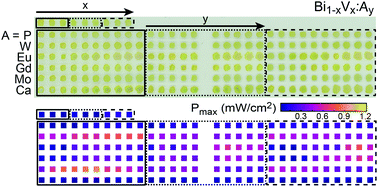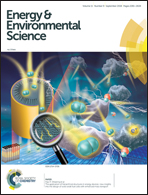Combinatorial alloying improves bismuth vanadate photoanodes via reduced monoclinic distortion†
Abstract
Improving the efficiency of solar-powered oxygen evolution is both critical for development of solar fuels technologies and challenging due to the broad set of properties required of a solar fuels photoanode. Bismuth vanadate, in particular the monoclinic clinobisvanite phase, has received substantial attention and has exhibited the highest radiative efficiency among metal oxides with a band gap in the visible range. Efforts to further improve its photoelectrochemical performance have included alloying one or more metals onto the Bi and/or V sites, with progress on this frontier stymied by the difficulty in computational modelling of substitutional alloys and the high dimensionality of co-alloying composition spaces. Since substitutional alloying concurrently changes multiple materials properties, understanding the underlying cause for performance improvements is also challenging, motivating our application of combinatorial materials science techniques to map photoelectrochemical performance of 948 unique bismuth vanadate alloy compositions comprising 0 to 8% alloys of P, Ca, Mo, Eu, Gd, and W along with a variety of compositions from each pairwise combination of these elements. Upon identification of substantial improvements in the (Mo,Gd) co-alloying space, structural mapping was performed to reveal a remarkable correlation between performance enhancement and a lowered monoclinic distortion. First-principles density functional theory calculations indicate that the improvements are due to a lowered hole effective mass and hole polaron formation energy, and collectively, our results identify the monoclinic distortion as a critical parameter in the optimization and understanding of bismuth vanadate-based photoanodes.



 Please wait while we load your content...
Please wait while we load your content...
